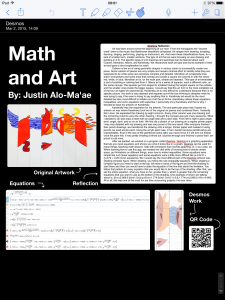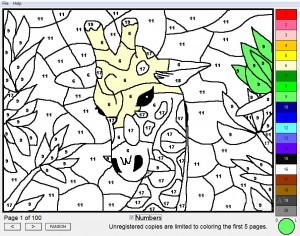I was having a conversation with my fifth grade colleagues yesterday as they are preparing for their students to present their capstone projects. I have been working with a couple of boys as a mentor for their work in understanding atomic structure – both what happens with the electrons around atoms, as well as what’s going on at the nuclear level – their work is amazingly deep and meaningful. But I digress…
In thinking about what the final assessment for their capstone presentation should look like, we got into some deep conversation about their final presentations, how those could be assessed to judge learning, and the importance of the learning path that occurred and the artifacts that the students are collecting as they move towards this final assessment. One of the challenges we were conversing about was the importance of formative feedback, and the opportunity that these pieces allow for feedback and reflection as well as the final presentation which provides an opportunity for feedback as well.
As we were talking, it reminded me of the story from good friend Dr. Phil Bossert at the HAIS office. He was at a resort on the Big Island and during a special event, a well-known local artist created a landscape painting while chatting with guests over the course of an hour or so. At the end of the conversation, the painting was done and was really beautiful. When the guests asked how much he would charge for the art, he responded $6000. Some people were surprised and asked how he could charge that much if it had only taken him an hour to create it. He responded by explaining that had not taken him an hour to paint it, it had taken him a lifetime of honing his skills so that he could create it the way that they had seen.
In much the same way, we often look at final presentations of learning as the only evidence of what has occurred, often forgetting the amount of enormous effort that goes into drafting, research, feedback loops, trial and error and the myriad of other ways our learning takes us before we get to the final exhibition. These presentations are often high-stakes affairs in that a 10 to 20 minute presentation can be worth a considerable amount of student’s grade. As teachers, we have sat with and talked with the learners as they have walked through the whole process, and in my opinion, if we have done our job right we have assessed and expected students to maintain clear and meaningful artifacts along the journey so that the story of their knowledge building is more fully told. Let me give you an example:
One of the projects that my students have worked on has been to create artwork under the guidance of the visual arts teacher. They have researched a particular style – Cubism and after creating their art were challenged to re-create it using mathematical functions in a online mathematical modeling software called Desmos. We are just at the culmination of this work where the students are going to create a art opening that showcases their artwork, their mathematical representations, and a written narrative that explores this range of knowledge building. One example of this work is from Justin:
We had a visitor from Greenwich High School in Connecticut, Brian Walach and Justin showed him this work. He was pretty impressed with what he saw, and inquired how much time Justin had put into a mathematical functions that represented his art. Justin replied that he’d spent over 80 hours – most of it of his own volition tweaking and massaging functions to make them work to produce a close replica of his lines and curves. When Brian asked him if he had been required to spend that much time, Justin explained that he had been driven to want to get it right – and had been willing to put in the time to took to understand the mathematics, and then create the final product. In much the same way that a driven artist or craftsman will work ceaselessly to hone their skill so that their work is their best representation of their abilities, when we’re designing great projects, we provide opportunities for students to dive in deeply and experience the pleasure, passion and yes, pain of working until it is right. As the adult who has been given the opportunity and challenge to assess learning, it is important to consider both the path and the product if we are to best determine the learning that has happened. Sometimes, the end product is just the tip of the iceberg and we do a disservice without thinking about the path the student has taken to get there. Malcolm Gladwell talks about the research that it takes 10,000 hours to become an expert in many fields. There is some debate about if this is an absolute requirement, but I think we can all agree that it takes dedicated time for anyone to become a true master craftsman in any field.
If we can create situations in our classrooms where students spend this time because they feel it is their urgent need, and less that they will be punished if they don’t, I know we would engender a more fully engaged, responsible and healthy learner.


